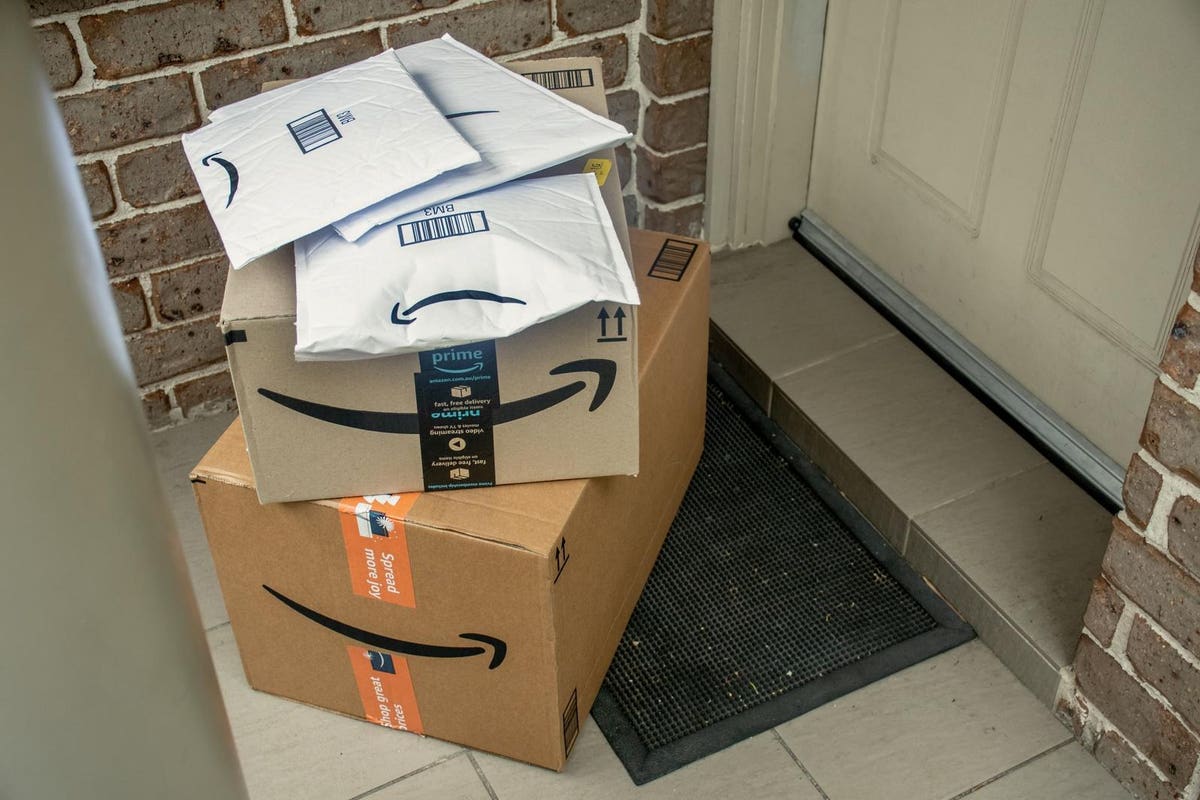Amazon Prime Day kicks off on July 11, and the porch pirates are set to sail.
While many retailers from Target to Home Depot have recently reported up to $763 million in lost profit due to in-store theft, damage and loss – called shrink – the threat is not limited to stores. At this time of year, online retailers should be bracing for shipment shrink.
This is especially the case for retailers that sell through Amazon right now.
An estimated 1.7 million packages are lost or stolen in the U.S. every day, according to the security company Security.org. But in the weeks following the Amazon Prime Day event (July 11 and 12 this year), those figures spike.
Based on its research, along with data from Google Trends, Security.org expects package theft in the week following Prime Day to rise by at least 40%. In many cases, online retailers – including those that sell on Amazon – will have to refund those losses.
Amazon’s Piracy Protection, From A To Z
Amazon’s A-to-z Guarantee policy protects customers who purchase goods from its third-party sellers, up to $2,500, but Amazon doesn’t get involved right away.
First, it requires customers to try resolving the issue directly with the seller. If it’s not resolved, the customer can then file a claim with Amazon, which will notify the seller and determine if a refund is eligible. (The guarantee applies to orders that were lost, stolen or damaged.)
Amazon gives the seller five business days to respond to its notification, but it advises they respond immediately, according to its A-to-z Guarantee policy for sellers. For items lost or stolen, the seller must provide Amazon with the tracking number, proof of shipping date and carrier, as well as details about the order and communications with the buyer.
Aside from being time consuming, each claim affects the seller’s “Order Defect Rate” with Amazon. This rate calculates the share of transaction dollars Amazon will hold in a reserve before issuing the money to the seller. For new sellers, Amazon holds 100% of a purchase price in the reserve for seven days.
“You should take care to minimize the number of claims granted against you on your account,” Amazon advises its sellers. “Issuing (a) refund is the easiest way to resolve the issue.”
Shrinking Shipments: How Retailers Can Protect From Pirates
Amazon’s policies are proactive; they encourage third-party sellers to plug all potential holes in their fulfillment processes before shrink becomes a cost issue. The week after Prime Day(s) will test those plugs, for sure. Here are a few ways to ensure they hold.
Suggest having orders locked up or countered. Retailers that sell through Amazon can have their purchases delivered to an automated Amazon Hub Locker or Hub Counter rather than to a buyer’s home (at no additional fee). Amazon operates Hubs in more than 900 locations, including malls, grocery stores and apartment buildings. But note, Amazon’s Hub Lockers accept packages only from Amazon. The Amazon Apartment Lockers, which are available to an apartment building’s residents, can accept packages from anyone.
Gauge ZIP code risks. Crime rates vary by city, and retailers can calculate the risk of a product being stolen. Amazon has in fact been adding safe-keeping Hub Lockers and Counters in ZIP codes where property crime rates are high. In San Francisco, where such crime rates are 5.5%, Amazon operates more than 100 Hubs, Security.org reports. In El Paso, Texas, where the rates are 1.5%, it runs just 14. The rollout can take time, however; in Houston, Amazon owns 21 Hubs, despite a 4% crime rate.
Be aware of seasonal security. During high-traffic e-tail events such as Prime Day, but also the holiday season, online retailers should encourage shoppers to provide delivery instructions if they don’t expect to be home when the package arrives. This can include scheduling it to be brought to a neighbor’s house. Opportunities to communicate these high-risk advisories outside of the online ordering process can include pre-event educational emails or messaging on a seller’s independent website to offer theft-prevention tips.
Ask to see the buyer’s fabulous penmanship. For high-value items in particular, retailers can advise – or require – an in-person signature upon delivery. If the customer does not expect to be home when the package is scheduled to arrive, retailers can suggest delivery to their place of work or add purchase shipping insurance.
Check out delivery insurance. Some delivery companies offer shipment insurance for merchants, which could make financial sense depending on order frequency, size and value. UPS Capital, the financial services division of the big brown delivery company, offers coverage through its InsureShield service for filing claims on a direct-to-UPS online portal. Sellers also might find it worthwhile to research third-party package protection options.
Don’t call attention to yourself. Porch pirates are equal-opportunity thieves, so Amazon boxes won’t be the only targets following Prime Day. Retailers and brands that fulfill their orders outside of Amazon would do well to keep their packaging low-key, meaning in muted colors, with minimal text (avoid logos and branding) and in small containers. When possible, retailers should use a shipping sleeve instead of a box, because its les obvious. Think of it this way: loose lips shrink shipments.
Send a “How’d it go?” Amazon’s real-time delivery notifications ask customers, “How was your delivery?” These email messages ensure a package has made it all the way to its purchaser, as well as gather feedback on delivery quality. Third-party sellers can send similar emails to customers, to rate the delivery and provide feedback about the product.
When Retailers Package Prevention, They Set Sales
During the 2022 Amazon Prime Day event, shoppers worldwide purchased nearly $12 billion in goods, according to data by Statista. Small- and medium-size businesses captured $3 billion in those sales, up from $1.9 billion in 2021.
The increase is encouraging, but it comes with higher expenses – in marketing, production and delivery. It’s unfortunate that the cost of theft must be factored into profit, as well. But if that cost is made as an investment to prevent shrink, rather than cover it, it could turn the tide on the problem.
And a high tide, after all, lifts all shipments. Ahoy, purchaser!
Read the full article here





